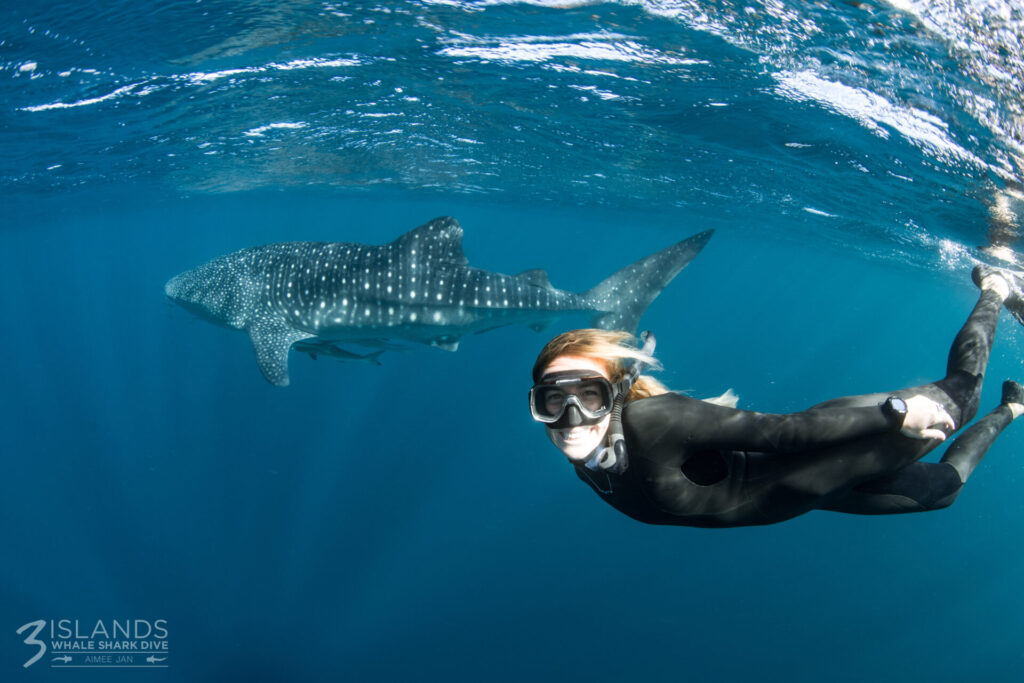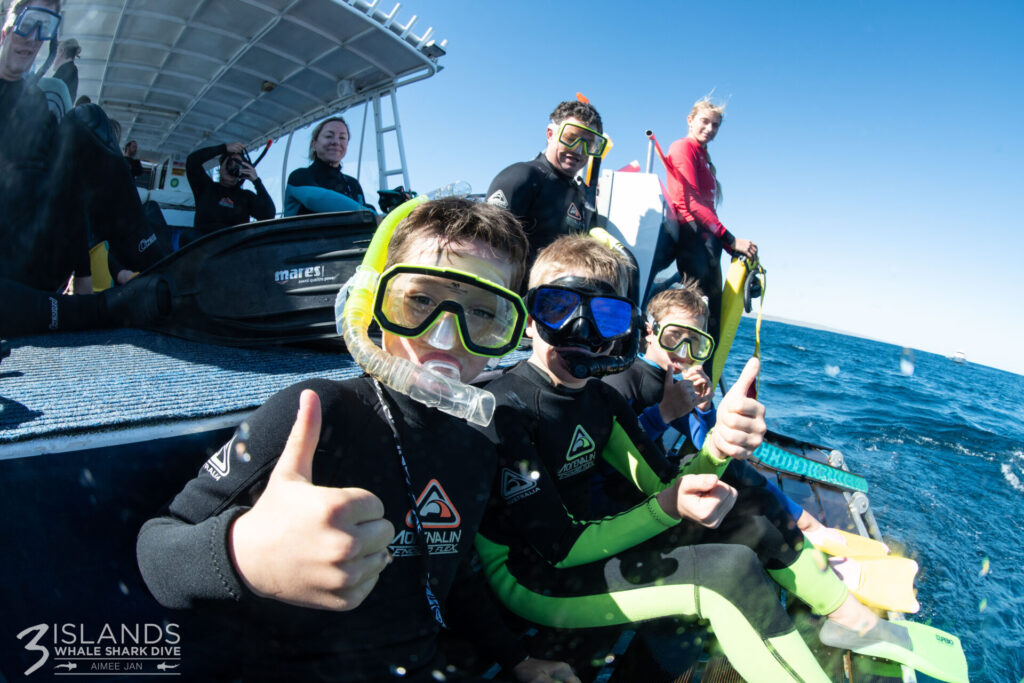Australia is home to two of the world’s most remarkable coral reef systems: Ningaloo Reef in Western Australia and the Great Barrier Reef in Queensland. Both are UNESCO World Heritage-listed and promise once-in-a-lifetime marine encounters, but they offer very different experiences.
If you’re planning a reef adventure and weighing up Ningaloo Reef vs. Great Barrier Reef, we’ve designed this guide to help you decide which best fits your travel style, budget and holiday goals. So get ready to picture yourself diving into crystal-clear waters and see how these two reef giants compare.
Getting there: How easy is each reef to reach?
When choosing between Ningaloo Reef and the Great Barrier Reef, one of the first things to consider is how easy each is to reach. Both offer incredible rewards once you’re there, but the journey — and the way you access the reef itself — is quite different.
Great Barrier Reef
Stretching more than 2,300 kilometres along Queensland’s tropical coast, the Great Barrier Reef is the largest coral reef system on Earth. Cairns and Port Douglas are the two main gateways. These are bustling hubs filled with tour operators, resorts and visitor facilities.
Most tours to the outer reef involve a 1–2 hour boat trip. For many, that’s part of the adventure, allowing you to cruise past picturesque islands and turquoise lagoons before jumping into open water.
It’s important to note, though, that the extra travel time can be challenging for families with younger children, or travellers who are prone to seasickness.
Ningaloo Reef
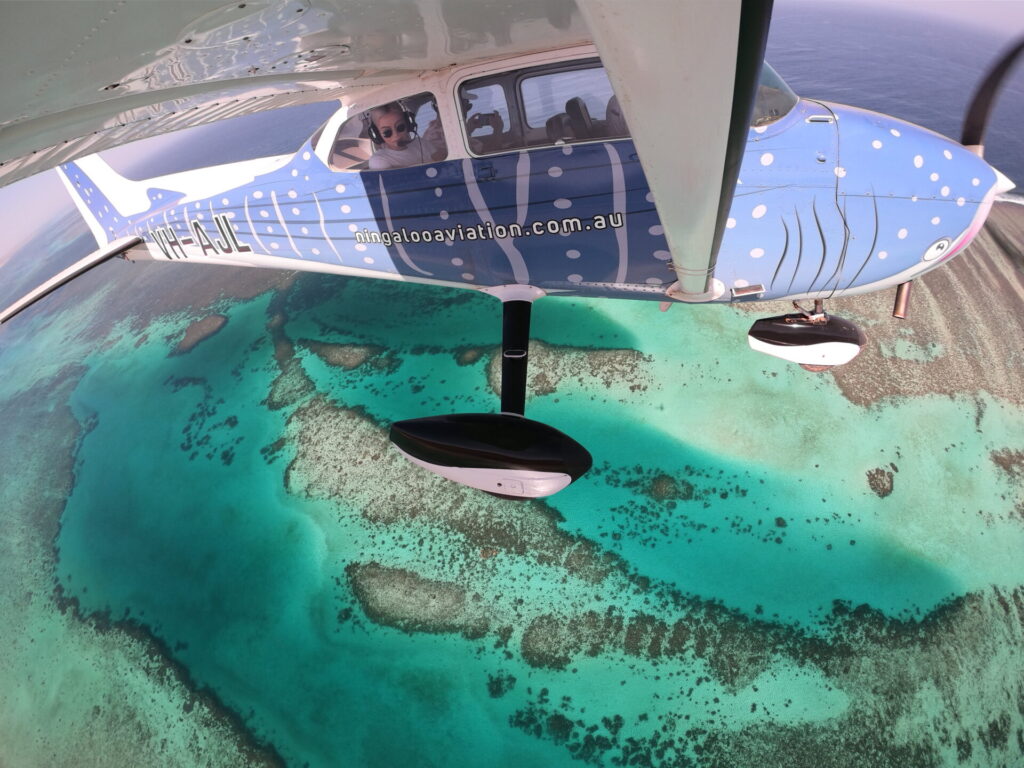
Ningaloo Reef, though smaller at 260 kilometres long, is uniquely accessible. Running along Western Australia’s Coral Coast, it’s one of the only places in the world where you can simply walk off the sand and start snorkelling over coral gardens!
Exmouth and Coral Bay are the main entry points, with each offering a relaxed coastal town atmosphere. Regular flights from Perth to Exmouth make the journey surprisingly straightforward. And once you’ve arrived, the reef is literally at your doorstep.
This means less time in transit and more time exploring in the water, which is a huge advantage for families and anyone looking for a hassle-free reef experience.
Marine life up close: Ningaloo vs. the Great Barrier Reef
Once you’ve figured out how to get there, the next big question is what you’ll see once you’re in the water. Both Ningaloo Reef and the Great Barrier Reef are home to dazzling arrays of marine species, but each offers its own kind of magic.
Great Barrier Reef
Thanks to its immense size, the Great Barrier Reef supports an extraordinary level of biodiversity. Across its 2,900 individual reefs, you’ll find more than 1,500 species of fish and over 400 types of coral. Amazing, right? That means that, from the bright flash of parrotfish to the slow grace of giant clams, every snorkel or dive promises something different.
The reef is also home to beloved turtles, including green, loggerhead and hawksbill varieties, regularly seen weaving their way through the coral. Reef sharks patrol the outer edges, while schools of damselfish and angelfish bring bursts of colour to sheltered lagoons.
With such variety, it’s no wonder the Great Barrier Reef is considered one of the most complex ecosystems on Earth.
Ningaloo Reef
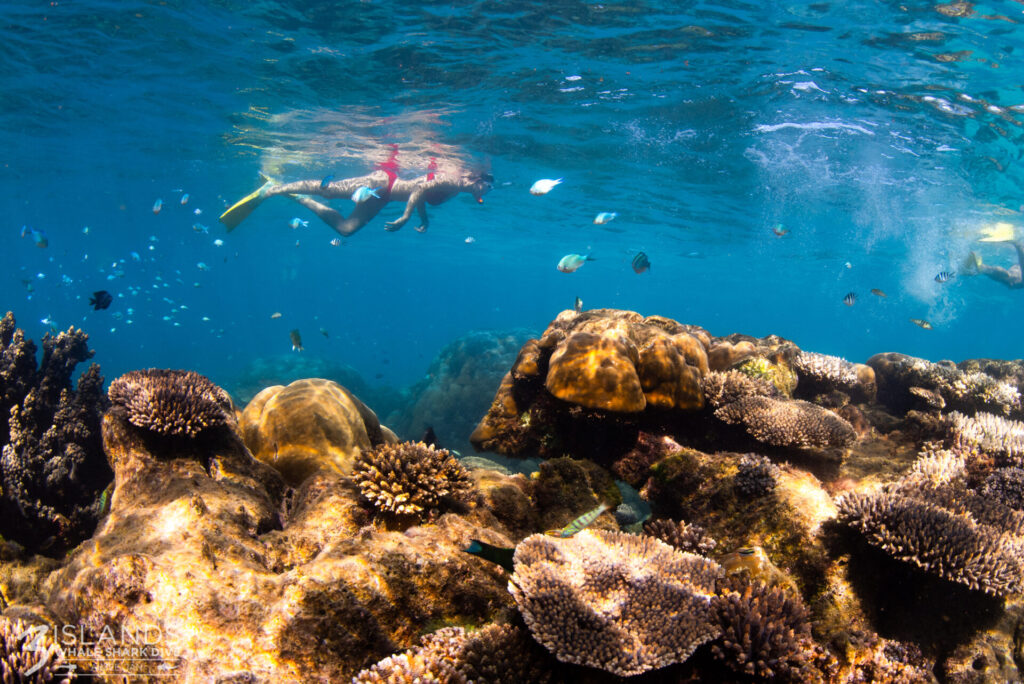
Ningaloo may be smaller in scale, but what it lacks in size it makes up for in spectacle. In fact, the reef is one of the world’s most reliable places to encounter whale sharks, which gather here between March and August to feed after the annual coral spawning. Watching these gentle giants cruise calmly just below the surface is the highlight of many travellers’ lives.
From July to October, humpback whales join the show. These giant songwriters of the sea migrate along the coast, offering opportunities for breathtaking sightings from the boat. Or even the chance to swim alongside them with licensed operators!
From shore snorkels to liveaboards: Experiences compared
Once you’ve arrived and taken in the scenery, the real adventure begins. Both reefs are brimming with ways to explore. The key difference lies in the type of experiences on offer.
Great Barrier Reef
Cairns and Port Douglas are lively gateways where you’ll find no shortage of tours. Day trips whisk you out to pontoons or the outer reef, where snorkelling and introductory dives let you discover coral gardens and shoals of reef fish.
For divers, the Great Barrier Reef is a mecca, boasting countless sites to choose from, like the Cod Hole and Osprey Reef. If you prefer a slower pace, island stays on places like Green Island or Fitzroy Island bring the reef to your doorstep, blending snorkelling with resort comforts. The sheer variety makes the Great Barrier Reef perfect for travellers looking for options.
Ningaloo Reef
What makes Ningaloo so special is not just what you’ll see, but how easily you can experience it. At Turquoise Bay, for example, you can drift effortlessly along with the current as turtles, rays and reef fish glide beneath you.
And sites like Oyster Stacks and Lakeside offer shallow lagoons perfect for relaxed snorkelling, while guided boat trips take you further out to explore pristine coral gardens.
Of course, Ningaloo is world-famous for its whale shark swims, carefully managed encounters where small groups enter the water with these gentle giants. Licensed operators like Three Islands Whale Shark Dive use spotter planes to locate them quickly, giving you the best chance of a memorable swim.
When to visit: Best times for each reef
When planning your trip, timing can make a big difference to what you’ll see, and how comfortable the conditions will be. Here’s what you need to keep in mind for each location.
Great Barrier Reef
The reef is accessible year-round, but the sweet spot is from June to October. This is when the visibility is excellent and the risk of marine stingers is minimal.
Ningaloo Reef
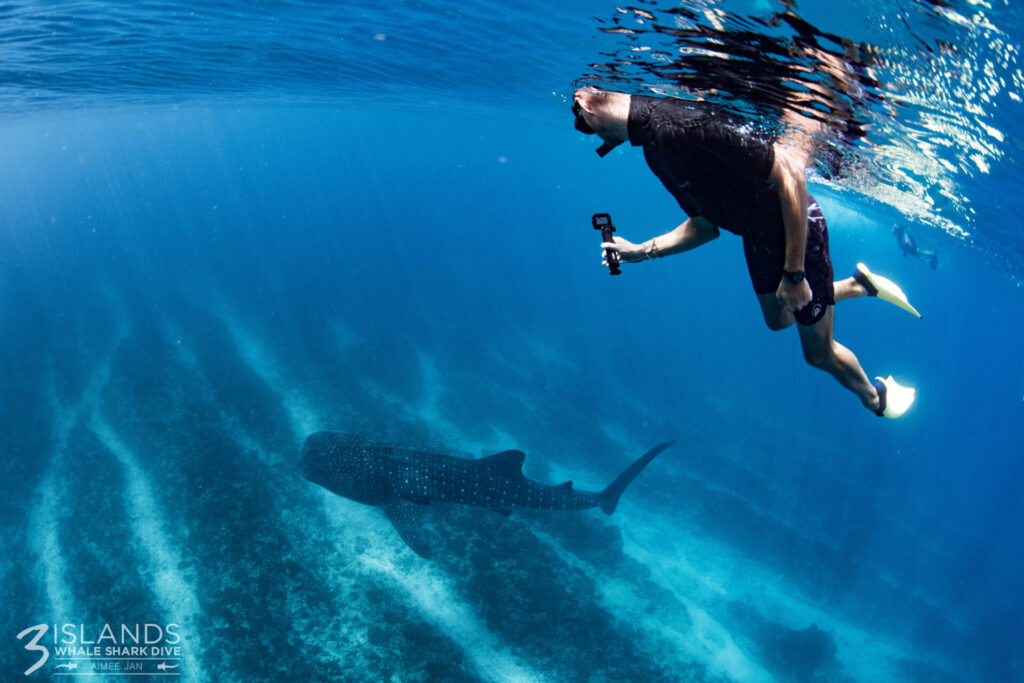
Ningaloo also offers year-round access, with its highlights tied to marine migrations. Whale sharks visit from Mid-March to Mid-October, while humpback whales pass by from July to October. The dry season (April–October) is best for clear skies.
Big and bustling vs. quiet and intimate
Both reefs promise unforgettable moments, but the scale of tourism shapes the experience in very different ways.
Great Barrier Reef
As one of the world’s most famous attractions, the Great Barrier Reef is often busy. Expect lively boats, reef pontoons, and dive sites with many fellow travellers, especially during school holidays.
Ningaloo Reef
Ningaloo, by contrast, offers a more laid-back, small-town vibe. Tours here focus on smaller groups and quieter encounters. That means you can expect less queueing and more time immersed in the reef.
Heritage and sustainability beneath the waves
Beyond the beauty of the reefs themselves, both hold deep cultural and ecological value.
Great Barrier Reef
The Great Barrier Reef is not only the largest coral reef system in the world, but also a living cultural landscape for Aboriginal and Torres Strait Islander peoples, who have cared for its sea Country for tens of thousands of years.
Today, it faces modern challenges such as coral bleaching and climate change, with extensive conservation programs working to protect its delicate ecosystems.
Ningaloo Reef
One of the last truly pristine reef ecosystems, Ningaloo operates under strict eco-tourism codes of conduct. Operators like Three Islands Whale Shark Dive hold Advanced ECO Certification and EcoStar Accreditation, ensuring encounters are safe, sustainable and respectful of Traditional Custodians.
The verdict: Ningaloo Reef vs Great Barrier Reef
There’s truly no wrong choice between these two icons of the natural world. The Great Barrier Reef shines with its sheer scale, extraordinary diversity and endless options.
Ningaloo Reef offers a more personalised experience, with shore-based snorkelling, small-group wildlife tours, and some of the world’s best whale shark and humpback whale encounters, and delivers accessibility and authenticity in pristine waters that feel untouched.
Whichever you choose, both reefs reward you with moments that stay with you. And beyond the memories, you’ll gain a deeper appreciation for Australia’s remarkable marine environments and the communities working to protect them.
Ningaloo or the Great Barrier Reef — where will you dive in?
Whether you’re drawn to the scale and variety of the Great Barrier Reef or the intimacy and accessibility of Ningaloo, one thing’s certain — you’re in for a memorable adventure with Australia’s most extraordinary marine life.
Here in Exmouth, we’d love to show you why Ningaloo has become a favourite for travellers seeking rare wildlife encounters and a more personal reef experience. With small groups, expert guides and eco-certified tours, Three Islands Whale Shark Dive makes your Ningaloo journey safe, seamless and spectacular.
So step into the clear blue and swim with the world’s gentle giants — book your spot today!
More...
7-Day Travel Itinerary for Exmouth and Ningaloo Reef
Planning a full week in Exmouth? Lucky you! With more time to explore the coastline, dive into the reef, and unwind under starry skies, you’re in for an adventure like no other. This 7-day Exmouth itinerary gives you the best mix of nature, relaxation and once-in-a-lifetime experiences. And all without overloading the schedule! So grab…
Can Kids Go On Whale Shark Tours? What Families Need to Know
Swimming with whale sharks is one thing, but watching your child do it? That’s the kind of wonder you will never forget. If you’re dreaming of an epic family adventure that’s equal parts exciting, educational and completely safe, look no further than Ningaloo Reef! Here at Three Islands, we often get asked one big question…




